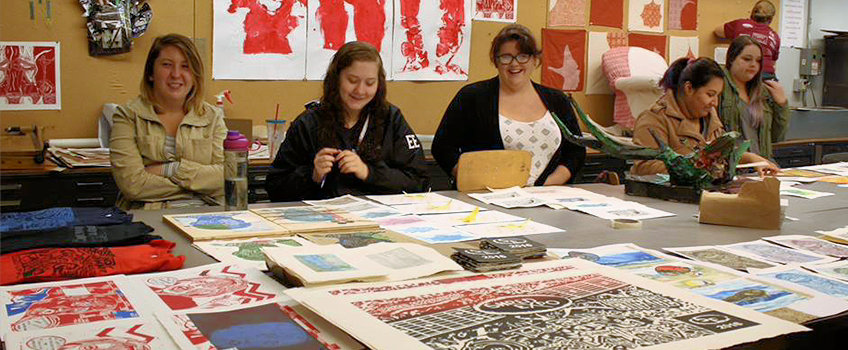Visual Arts Program - Portfolio Requirements

Portfolios are reviewed throughout the year, and are required for the BA and BFA studio concentration. A portfolio is not required for Art History.
Portfolio Review FAQ
Admission to a Visual Arts Program studio concentration allows students to take upper level (3000 and 4000) courses in Visual Art, which are required for graduation with a BFA or BA in studio art. Any student enrolled at the University may take lower level (1000- and 2000-level) Visual Arts courses and may declare a Visual Arts major, but he or she will be required to pass the portfolio review prior to taking upper level courses.
Portfolios are evaluated based on a consensus of the full time members of the Visual Arts program faculty. In addition to submitting a complete portfolio (see requirements), you should submit works that demonstrate creativity in the selection and use of content, effective use of composition and form, as well as a competence with art making processes, such as the ability to utilize the elements of design and the principles of organization, and skills and techniques for drawing from direct observation. If you are asked to resubmit a portfolio (did not pass), you must meet with a member of the Visual Arts faculty to review the work.
If you were applying as a first time freshman, include 10 to12 images of your original works including two drawing works (still life, drawn from observation, or figure drawings).
If you were applying as a transfer students, include up to 24 images of your original works, including two drawings made from direct observation (from life). For each image, indicate the course title which your work was produced. This information will ensure that your art credits will be counted properly when you come to Stockton University.
Submission instructions and formatting specifications.
Please follow these formatting guidelines carefully. Portfolios that do not conform
to these guidelines may be considered incomplete and need to be resubmitted.
- File format: JPEG only
- File dimensions: 1200 pixels on the longest side.
- File resolution: 72 ppi/dpi (standard web resolution)
- File size: total 5 MB maximum
An excellent guide to sizing and resizing your images can be found HERE.
File names should be lowercase, with no spaces. (Example: johnson_john_01.jpg; johnson_john_02.jpg;
and so on.) Do not begin with a number.
- Drawing: Your portfolio must include two drawings made from direct observation (from life). Subjects may include the human figure, portraits, and still life. Other forms of drawing, such as abstraction, are welcome, but drawing from life should be emphasized.
- Painting: A variety of painting media is welcome: oil, acrylic, watercolor, and others. Paintings may range from realism to abstraction, or some combination, emphasizing your approaches to color, form, and composition.
- Photography: Photography showing careful study of light, form, and subject may be included, but avoid snapshots and other less considered formats. Digital and film formats are welcome in both color and black and white. Students who haven’t taken a photography course should consult with a trusted teacher or professor before including photography in the portfolio.
- Sculpture and other 3D media: Work in clay, wood, mixed media, and other materials may be included, emphasizing form, composition, and content.
- Digital Media: Digital media should emphasize your ability with form, content, and composition over technical knowledge of graphics programs.
- Drawings made from photographs, especially from magazines and internet image sources. Working from your own photographs as a reference is acceptable, but drawing from life is preferable.
- Work made more than two years prior to submitting the portfolio.
- Work copied from other artists.
- Cartoons and comics. Include these only if the work is original in style and content: no existing characters or styles (such as manga).
- Snapshot photography: Avoid including photographs made quickly to record a person, place, or event without artistic intent.


